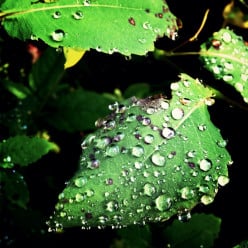Changing trends of Rock n' Roll over the years
Rock 'n' roll didn’t just emerge out of an abyss of awesome- it has its roots like any other musical genre. Starting in the late 1940s, the upbeat Chicago style blues began to fuse with African American R&B rhythms to create something totally new and provacative. Some of the earliest rock artists didn’t write their own songs at first, they covered old blues songs and added their own special rock touches to them. The term “rock 'n' roll” actually came into being a few decades before the music. The phrase was first used in a song by Trixie Smith, titled "My Baby Rocks Me With One Steady Roll." It was slang at the time for dancing, and “roll” was used as a verb that was synonymous with sex.
At first, rock was an underground attraction, fairly exclusive to African Americans. A disc jockey from Cleveland, Ohio helped to change this. His name was Alan Freed, and he noticed that young, white teenagers were frequently buying African American rhythm and blues albums in record stores. He began to market this music as rock ‘n’ roll on the radio. Not only did he knock down racial blockades, but he also helped rock achieve mainstream success that it hadn’t seen before. Freed was also responsible for setting up some of the first rock concerts.
Rock in the 1950s
Depending on your source, what the first rock record actually was will vary. Regardless of what the first album was, the 1950s was the decade that rock's popularity soared. Racial discrimination issues were becoming apparent in the United States more than ever during the 1950s, and rock was defying the separation. It mixed multiple cultures, and there was a strong demand for it.
Rock had a major social impact on the world during the 1950s. Rock lyrics were much more suggestive and politically charged than other genres, and the teenage population couldn’t get enough of it. The music motivated them to rebel in some ways
Rock in the 1960s and 1970s
Drugs, sex, and rock ‘n’ roll often get associated with each other, and we can credit that to 1960s rock. Rockstars had always tended to have a more chaotic lifestyle, even in the 1950s, but that was largely unknown to the public until the 1960s. It was then, due partly to the growing press surrounding rock music that musicians drug and alcohol use became public. Band groupies began to break onto the rock scene, and wild stories would fly around in gossip columns about the crazy encounters they had with rock stars.
500,000 people were in attendance. The overall attitude of the festival was very bohemian, particularly the clothing. All kinds of monumental artists played including The Grateful Dead (who experienced technical issues while they performed), The Who, Jimi Hendrix, and Sha-Na-Na.
Drug use also seemed to be a big part of 60s rock, and that trend never really seemed to die out terribly wrong. Psychedelic rock went as far as to try and imitate the effect of drugs. Lyrics typically revolve around something that isn’t tangible, like dreams or feelings. Psychedelic rock also used the latest technology to alter sounds with different distorting methods. Keyboards were used a lot more in this type of rock than in others. Album covers often tended to be more creative and abstract than other genres, where a simple band name and album title was sufficient. The famous LP cover for Sgt Pepper’s Lonely Heart Club Band by the Beatles revolutionized artwork in the music industry, giving way to the exciting artwork we see on albums today.
Cannabis was soon to follow the psychedelic drugs, and when the Beatles acknowledged they used it, the stigma attached to marijuana seemingly vanished from the rock community. Drugs and rock by the late 1960s seemed like nothing special, the media shock wasn’t there anymore. It still wasn’t acceptable to the older generation, and the youth was still overwhelmed with it. However, when the drugs began to take a toll on many rock stars awareness rose of how dangerous they could be.
Heavy metal also reached the mainstream rock scene during the 1970s. Heavy metal originated
much the guitar oriented bands of the 1970s. MTV provided a great market for the more popish bands, while the new wave rock bands began to fall into other genres.
Rock in the 1980s and Onwards
During the 1980s, rock began to split into many different genres; and they were all popular, causing the rock scene to faction. Prior to the 80s, it seemed genres raised and fell in popularity. When something new came along, the old left. That wasn’t the case in the 1980s. Old artists were examined again, and new ones were everywhere. The development of music oriented media helped this, as there was more room in the spotlight for variety.
Bands like R.E.M. and the Cure helped to bring this undefined genre to the mainstream, and it became particularly popular in the 1990s, with the rising popularity of grunge. Grunge originated from the northwestern coast of the United States, mainly in the Seattle region. Influences of the genre vary from band to band. Bands like Pearl Jam cite punk rock as an inspiration, while bands like Soundgarden were influenced quite a bit by metal. Grunge would hit the mainstream when Nirvana’s album Nevermind was released in 1991.
The 1990s also saw nu metal begin to reach popularity with bands like the Red Hot Chili Peppers (who would explore multiple genres throughout their career), Korn and Kid Rock. Musically, the guitar in nu metal is similar to that of thrash metal, focusing on rhythmic beats without the use of complicated patterns of chords. The drums and bass tend to have an almost hip-hop like vibe. Tool has been sited by many bands as a vocal influence. The genre began to widen as it grew in
. Emotional hardcore is another acceptable name
As long as musicians exist who want to challenge social standards, create unique songs, and alter music as we know it, rock will continue to grow, develop and expand as it has done in the past. From the earliest, practically ancient pioneers of the late 1940s, to the modern rock idols, each and every artist or group has done something to allow this eccentric genre to keep its place in the history of music, and influence devoted fans all over the world.As a fellow Indian rock music fanatic - I named my son Elvis - though 66, I feel elated that someone as young as you are, can come up with something as in-depth as this. Congratulations.
Related Discussions
- 8
What is your favourite genre of music and why?
by Ninasvoice 13 years ago
What is your favourite genre of music and why?
- 10
Who's your favorite 70's Rock n Roll Band?
by Didistoyz 14 years ago
Who's your favorite 70's Rock n Roll Band?
- 15
What is your favorite music (band, song, artist, genre, etc.)?
by Joe Beamon 12 years ago
What is your favorite music (band, song, artist, genre, etc.)?
- 30
The Alternative
by kerouac1986 13 years ago
Every generation rock n roll has changed and transformed into something else and now you don't hear much about rock music which I think is bullshit. I hear some people say rock n roll is dead, But they are wrong rock n roll is in the underground as we all are. so my question ...
- 9
Rock music is dieing
by maheshpatwal 15 years ago
In this new era where hip hop and other forms of music have gained huge popularity rock music has lost its fanbase and its sheen? Do u really think rock music has died?
- 6
What are your favorite genre(s) of music?
by tsmog 8 years ago
What are your favorite genre(s) of music?Do you think a favorite genre is generation related, lifestyle choice, or something else? As you grew older did you lose touch with that genre's growth sticking with the favorites?







